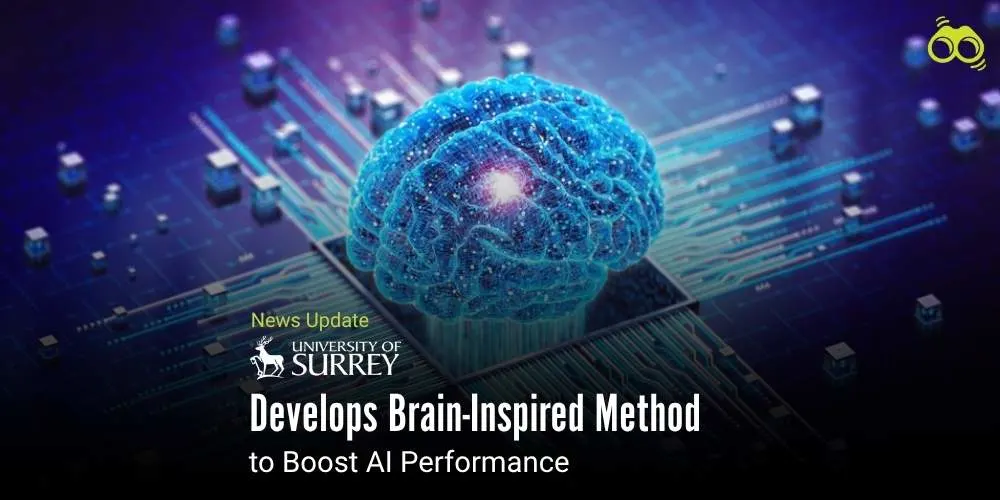UK AI University Pioneers Brain-Like Neural Networks for Machine Learning
New Neural Mapping Technique Enhances AI Efficiency and Sustainability
The University of Surrey holds an outstanding national reputation as a research-intensive and innovative institution, known for its close collaboration with industry. Its areas of excellence span artificial intelligence, engineering, health sciences, and sustainability-focused research. The university continues to lead in cutting-edge work across neural networks, machine learning, and cognitive computing, contributing meaningfully to global efforts in AI performance optimisation through interdisciplinary research and strategic partnerships.
Researchers at what is widely regarded as one of the UK’s foremost AI universities, the University of Surrey, have developed a novel methodology to enhance artificial intelligence performance by studying how the human brain organises information. Their findings, published in Neurocomputing, suggest that emulating the brain’s natural wiring can significantly optimise neural networks used in machine learning models and generative AI systems such as ChatGPT.
To begin with, the team introduced Topographical Sparse Mapping, a model that connects each artificial neuron only to nearby or related neurons. This mirrors the brain’s efficient processing of information, reducing unnecessary links and thereby improving system performance. As a result, the model supports AI performance optimisation while lowering energy consumption. Senior Lecturer Dr Roman Bauer, one of the researchers involved, stated that more intelligent systems can be built without compromising quality. He noted that training large AI models currently consumes over a million kilowatt-hours of electricity, which he described as unsustainable given the rapid growth of data-intensive artificial intelligence research.
Building on this, the team developed an enhanced version called Enhanced Topographical Sparse Mapping. This model introduces a “pruning” process during training, inspired by the way the brain strengthens and refines its neural connections as it learns. Over time, this makes the system more accurate and energy-efficient, offering a practical example of brain-inspired artificial intelligence. In addition, the researchers are exploring how this approach could be extended to cognitive computing and neuromorphic computers—systems designed to emulate the architecture and function of the human brain. These applications may lead to more realistic and sustainable computing technologies.
Beyond its technical achievements, the research reinforces the University of Surrey’s leadership in advancing neural networks to improve AI performance. It also prompts wider discussions about which universities are leading in AI research in the UK, and whether artificial intelligence can learn like the human brain. The work reflects how the latest advancements in AI technology for neural networks are shaping the future of intelligent systems. As AI continues to evolve, this research points towards a promising direction, one that prioritises both innovation and sustainability in building smarter technologies.
Editor’s Note:
This development from the University of Surrey represents a significant step forward in artificial intelligence research. Scientifically rigorous and forward-looking, the work draws inspiration from the brain’s natural wiring to improve AI performance while tackling the pressing issue of energy consumption in modern machine learning systems. The timing could not be more appropriate. As AI models grow in size and complexity, the environmental impact of training and deploying them can no longer be ignored. The introduction of Topographical Sparse Mapping and its enhanced version with biologically inspired pruning demonstrates that performance optimisation can be achieved without compromising sustainability. It affirms a vital principle: efficiency and intelligence must go hand in hand. This research also underscores the University of Surrey’s position as one of the UK’s leading institutions in AI. Its interdisciplinary work in neural networks, cognitive computing, and neuromorphic systems is both technically impressive and socially relevant. It raises important questions about how AI can learn and evolve in ways that resemble human cognition, and whether such models can lead to more responsible and realistic computing systems.
Skoobuzz underlines that in a world where innovation often outpaces reflection, this research offers a balanced and thoughtful perspective. It encourages the sector to pursue smarter, more sustainable solutions, an ethos that should guide all future advancements in artificial intelligence.
FAQs
1. What is brain-inspired artificial intelligence, and how is it used at the University of Surrey?
Brain-inspired artificial intelligence refers to AI systems designed to mimic how the human brain organises and processes information. At the University of Surrey, researchers have developed a model called Topographical Sparse Mapping, which connects artificial neurons in a way similar to the brain’s efficient wiring. This approach improves AI performance while reducing energy consumption.
2. How does the University of Surrey use neural networks to improve AI performance?
The University of Surrey has introduced a new method that optimises neural networks by limiting connections to nearby or related neurons, much like the brain does. This technique, known as Topographical Sparse Mapping, enhances machine learning models and generative AI systems such as ChatGPT, making them more efficient and sustainable.
3. What are the latest advancements in AI technology for neural networks from this research?
The latest advancement is Enhanced Topographical Sparse Mapping, which adds a biologically inspired “pruning” process during training. This mirrors how the brain refines its neural connections over time, resulting in more accurate and energy-efficient AI systems. The research also explores applications in cognitive computing and neuromorphic computers.
4. Can artificial intelligence learn like the human brain?
While AI cannot fully replicate human cognition, the University of Surrey’s research shows that learning mechanisms inspired by the brain, such as selective connectivity and pruning, can significantly improve AI performance. These methods help artificial intelligence evolve in ways that resemble human learning patterns.
5. Which universities are leading in AI research in the UK?
The University of Surrey is widely recognised as one of the UK’s foremost AI universities. Its interdisciplinary work in artificial intelligence, neural networks, machine learning, and sustainability-focused computing places it at the forefront of AI performance optimisation and innovation.














0 Comments (Please Login To Continue)